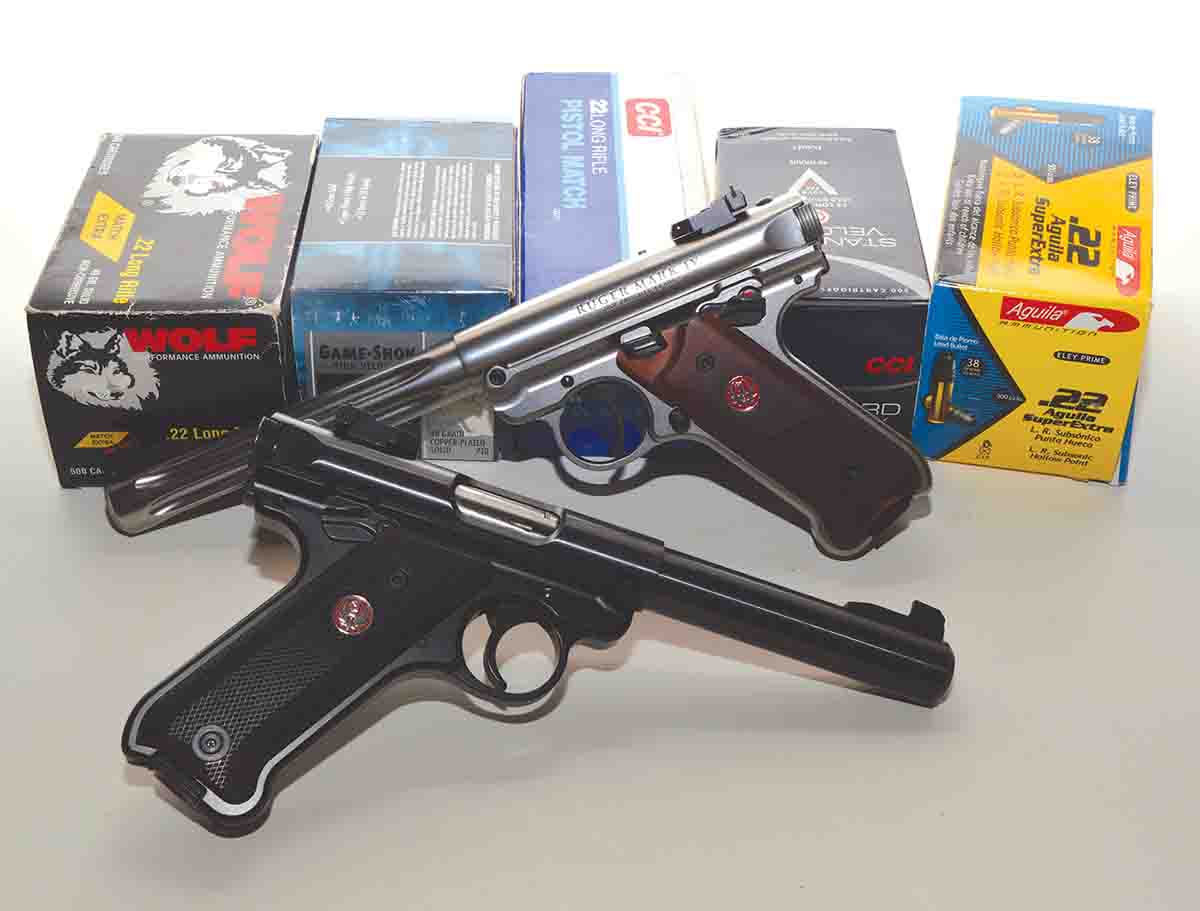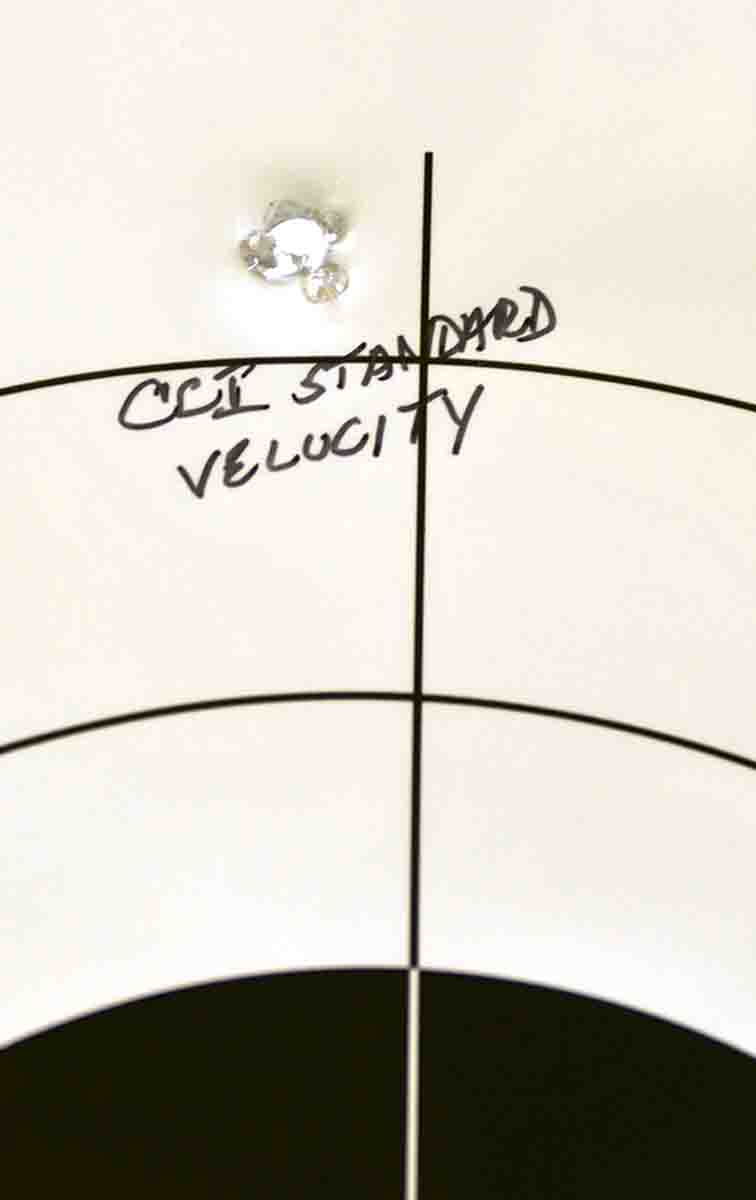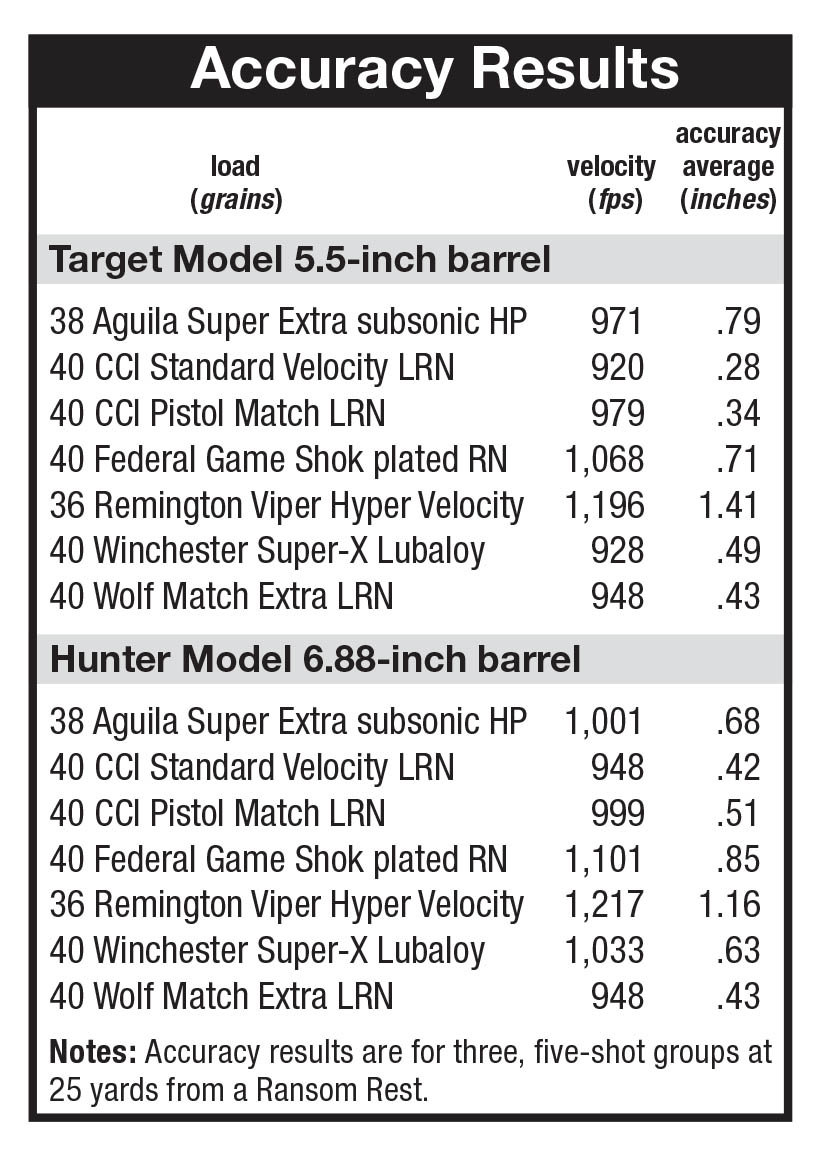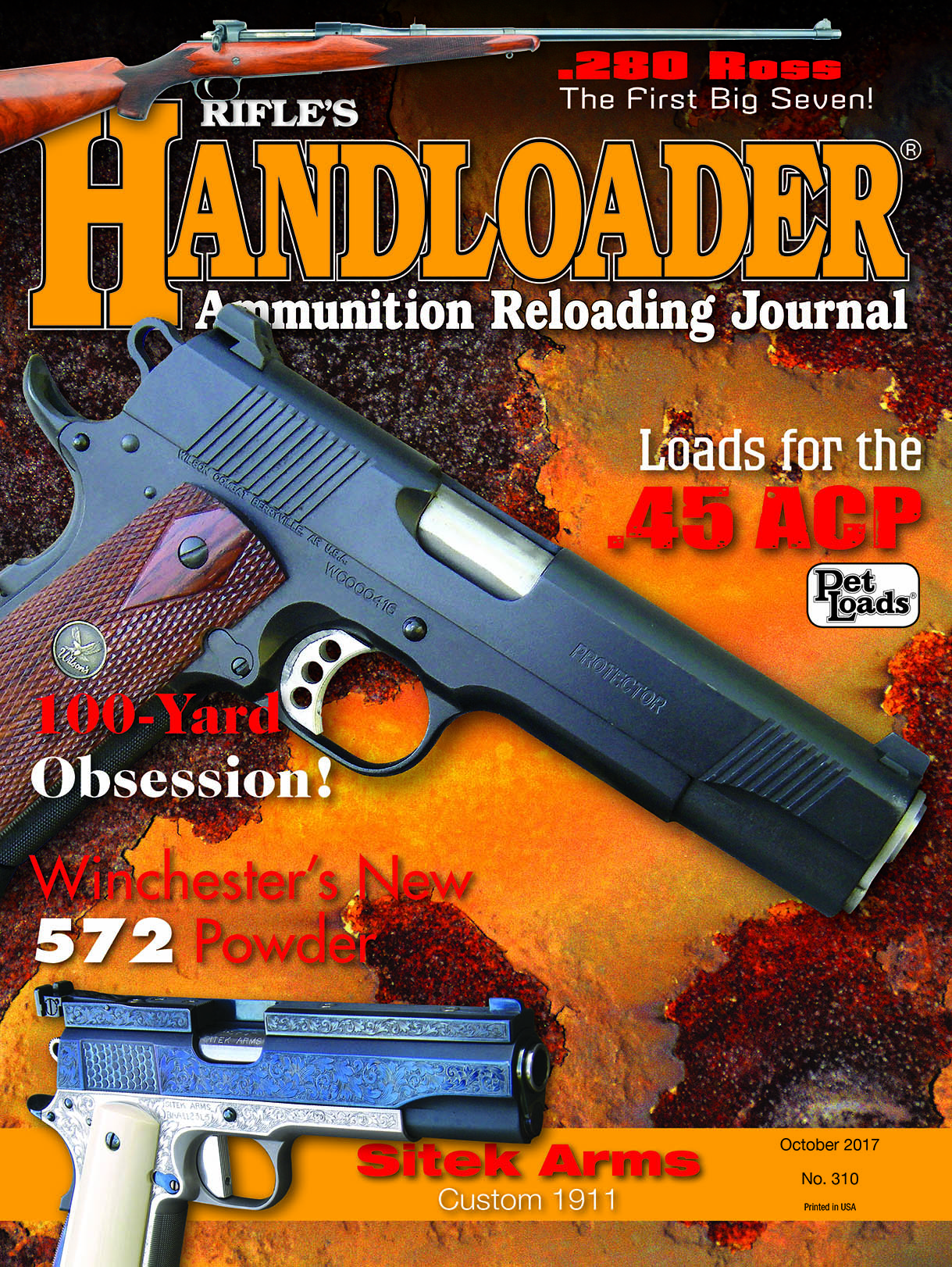Product Test
Ruger MK IV .22 Long Rifle
whatsnew By: Charles Petty | October, 17

The first thing to notice about the new Ruger Mark IV is that the mainspring housing/takedown latch is missing from the back of the grip. Looking closely, there are lots of other differences. The overall appearance is faithful to the original “Luger-ish” look that was so attractive to this “kid,” but now it locks open when the last round is fired, now it has an ambidextrous safety, a bolt release you can reach, a magazine release where it’s supposed to be behind the trigger and a magazine that departs with authority when the release button is pushed.
Gone is the California-mandated, widely cursed, loaded chamber indicator, but the magazine safety is still present. (Rumor has it that a gunsmith can remove it when he does the trigger job that most shooters will want.) The two test pistols sent for this review had trigger pulls of 5.8 and 5.9 pounds. They were nicely crisp, but my trigger finger protested loudly when the pressure went far beyond the point where the pistols should have fired. It took a mental gear shift to avoid jerking the trigger.

There are no takedown tricks or secret incantations needed: remove magazine, unload the pistol, put the safety on, press takedown button, tip barrel up, remove. There is a shotgun-type hinge, so the barrel and receiver just lift off. The part that caused so much trouble in earlier models is called the “bolt stop pin,” but now it is movable, so all you have to do is make sure it is pointed in the right direction and just press the two parts together until it clicks.
Some .22s are sensitive to ammunition choices and don’t always like standard velocity loads. During testing, standard velocity ammunition fed and functioned perfectly. Two examples were tried: the Target model in blue with an aluminum frame and steel 5.5-inch bull barrel and the Hunter model in stainless with a 6.88-inch stainless, fluted barrel.
Rear sights are adjustable for windage and elevation. The Target model has a black Patridge sight and traditional rear leaf. The Hunter model has a fiber optic front, but the rear leaf has a shallow V with a white line in the middle. Both models are drilled and tapped for a scope base.
Accuracy testing was done using a Ransom rest, and ammunition was chosen to cover a wide range of available load types, from match, standard velocity, high and hyper-velocity loadings. The results are in the accompanying table. For information, visit www.ruger.com.



